
Demographic features of the population of Bosnia and Herzegovina include population density, ethnicity, education level, health of the populace, economic status, religious affiliations and other aspects of the population.

The Eastern Orthodox Church, officially the Orthodox Catholic Church, and also called the Greek Orthodox Church or simply the Orthodox Church, is the second-largest Christian church, with approximately 220 million baptised members. It operates as a communion of autocephalous churches, each governed by its bishops via local synods. The church has no central doctrinal or governmental authority analogous to the head of the Catholic Church. Nevertheless, the Ecumenical Patriarch of Constantinople is recognised by them as primus inter pares, a title formerly given to the patriarch of Rome. As one of the oldest surviving religious institutions in the world, the Eastern Orthodox Church has played an especially prominent role in the history and culture of Eastern and Southeastern Europe.

Demographic features of the population of Slovenia include population density, ethnicity, education level, health of the populace, economic status, religious affiliations and other aspects of the population.

Demographic features of the population of Serbia include vital statistics, ethnicity, religious affiliations, education level, health of the populace, and other aspects of the population.
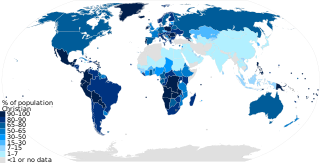
As of the year 2021, Christianity had approximately 2.38 billion adherents and is the largest religion by population respectively. According to a PEW estimation in 2020, Christians made up to 2.38 billion of the worldwide population of about 8 billion people. It represents nearly one-third of the world's population and is the largest religion in the world, with the three largest groups of Christians being the Catholic Church, Protestantism, and the Eastern Orthodox Church. The largest Christian denomination is the Catholic Church, with 1.3 billion baptized members. The second largest Christian branch is either Protestantism, or the Eastern Orthodox Church.

Moldova's constitution provides for freedom of religion and complete separation of church and state, though the constitution cites the "exceptional importance" of Eastern Orthodox Christianity. Discrimination on the basis of religious affiliation is illegal, and incitement to religious and ethnic hatred was made illegal in May 2022. Religion in Moldova is dominated by the Eastern Orthodox branch of Christianity. According to the 2014 Moldovan census, 90 per cent of the country reported to be of the Eastern Orthodox Christian faith. Of this number, around eighty to 90 per cent of Orthodox Moldovans belong to the Moldovan Orthodox Church which is subordinate to the Russian Orthodox Church, and has played a powerful role in deepening Russia's influence in Moldova. The remaining 10–20 per cent of Orthodox Moldovans belong to the Metropolis of Bessarabia, which is subordinate to the Romanian Orthodox Church.

Religion has been a major influence on the societies, cultures, traditions, philosophies, artistic expressions and laws within present-day Europe. The largest religion in Europe is Christianity. However, irreligion and practical secularisation are also prominent in some countries. In Southeastern Europe, three countries have Muslim majorities, with Christianity being the second-largest religion in those countries. Ancient European religions included veneration for deities such as Zeus. Modern revival movements of these religions include Heathenism, Rodnovery, Romuva, Druidry, Wicca, and others. Smaller religions include Indian religions, Judaism, and some East Asian religions, which are found in their largest groups in Britain, France, and Kalmykia.

Serbia has been traditionally a Christian country since the Christianization of Serbs by Clement of Ohrid and Saint Naum in the 9th century. The dominant confession is Eastern Orthodoxy in the fold of Serbian Orthodox Church.
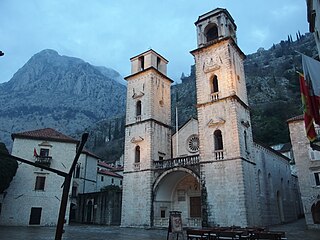
Eastern Orthodox Christianity is largest religion in Montenegro, but there are also sizeable numbers of adherents of both Catholic Christianity and Islam.
As of 2011, most Armenians in Armenia are Christians (97%) and are members of the Armenian Apostolic Church, which is one of the oldest Christian churches. It was founded in the 1st century AD, and in 301 AD became the first branch of Christianity to become a state religion.
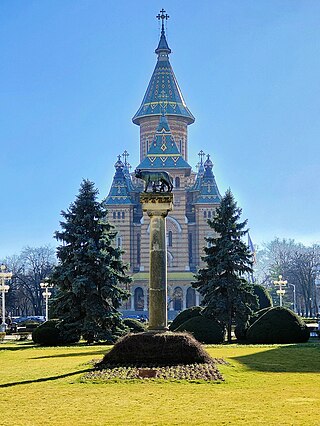
Christianity is the main religion in Romania, with Romanian Orthodoxy being its largest denomination.

Christianity is the largest religion in Europe. Christianity has been practiced in Europe since the first century, and a number of the Pauline Epistles were addressed to Christians living in Greece, as well as other parts of the Roman Empire.
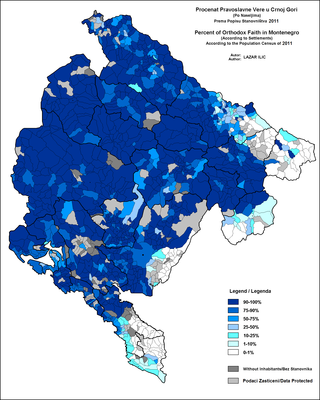
Eastern Orthodoxy in Montenegro refers to adherents, religious communities, institutions and organizations of Eastern Orthodox Christianity in Montenegro. It is the largest Christian denomination in the country. According to the latest census of 2011, 446,858 citizens of Montenegro (72.07%) registered as Eastern Orthodox Christians. The majority of Eastern Orthodox people in Montenegro are adherents of the Serbian Orthodox Church. A minor percentage supports the noncanonical and unrecognized Montenegrin Orthodox Church, which has the status of a religious non-governmental organization (NGO) since its founding in 1993.
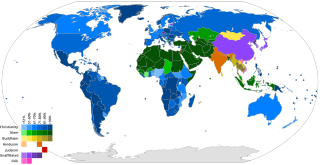
This is an overview of religion by country or territory in 2010 according to a 2012 Pew Research Center report. The article Religious information by country gives information from The World Factbook of the CIA and the U.S. Department of State.

The predominant religion in the Republic of Ireland is Christianity, with the largest denomination being the Catholic Church. The Constitution of Ireland says that the state may not endorse any particular religion and guarantees freedom of religion.
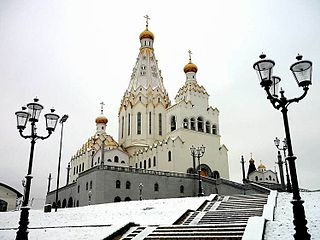
Christianity is the main religion in Belarus, with Eastern Orthodoxy being the largest denomination. The legacy of the state atheism of the Soviet era is evident in the fact that a part of the Belarusians are not religious. Moreover, other non-traditional and new religions have sprung up in the country after the end of the Soviet Union.
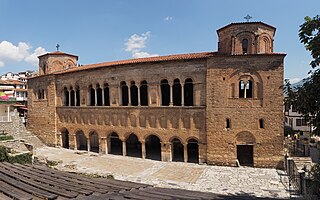
In North Macedonia, the most common religion is Eastern Orthodox Christianity, practiced mainly by ethnic Macedonians, Serbians, Vlakhs, and Romanis. The vast majority of the Eastern Orthodox in the country belong to the Macedonian Orthodox Church, which declared autocephaly from the Serbian Orthodox Church in 1967.

Christianity is the most adhered-to religion in Canada, with 19,373,330 Canadians, or 53.3%, identifying themselves as of the 2021 census. The preamble to the Canadian Charter of Rights and Freedoms refers to God. The French colonization beginning in the 17th century established a Roman Catholic francophone population in New France, especially Acadia and Lower Canada. British colonization brought waves of Anglicans and other Protestants to Upper Canada, now Ontario. The Russian Empire spread Orthodox Christianity in a small extent to the tribes in the far north and western coasts, particularly hyperborean nomads like the Inuit. Orthodoxy would arrive in mainland Canada with immigrants from the eastern and southern Austro-Hungarian Empire and western Russian Empire starting in the 1890s; then refugees from the Soviet Union, Eastern Bloc, Greece and elsewhere during the last half of the 20th century.

Christianity is the predominant religion in Serbia. The Constitution of Serbia defines it as a secular state with guaranteed religious freedom. Eastern Orthodox Christians with 6,079,396 members, comprise 84.5% of country's population. The Serbian Orthodox Church is the largest and traditional church of the country; adherents of it are overwhelmingly Serbs. Public schools in Serbia allow religious teaching, most commonly with the Serbian Orthodox Church. Serbian public holidays include the religious celebrations of Eastern Orthodox Christians. Other Orthodox Christian communities in Serbia include Montenegrins, Romanians, Macedonians, and Bulgarians. The Catholic Church is prominent in north Vojvodina amongst the Hungarian minority. Protestantism is most largely found in Slovak populations within Bački Petrovac and Kovačica. Christianity first arrived in Serbia in the 9th century. It became state-religion in the 9th century when Serbia began to identify as a Christian country. In a 2011 census, 91.22% of Serbians identified as Christian.
Based on the numbers of adherents, the Eastern Orthodox Church is the second largest Christian communion in the world, after the Roman Catholic Church, with the most common estimates of baptised members being approximately 220 million. The numerous Protestant groups in the world, if taken all together, substantially outnumber the Eastern Orthodox, but they differ theologically and do not form a single communion.




















